May 13
# Argentine Primera División Recommended Books # Peter the Dreamer, Ian McEwan
(Author), Sun Zhongxu (Translator); Shanghai Translation Publishing House, 2015.
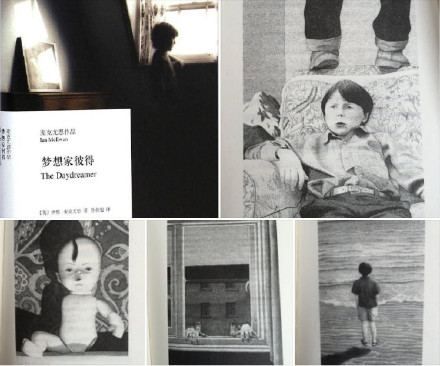
A short book worth reading and savoring slowly. Peter is a 10-year-old boy who dreams all day long. The opening story, “Peter the Man,” is quite amusing. The seven subsequent stories depict Peter in either dream or non-dream states (who can really tell?), seemed silly at first, but the second story, “The Cat,” was a thrilling revelation, a profound insight into life. The fourth story, “The Overlord,” had me even more lost in thought, as if I were glimpsing a vast and profound pattern… Overall, though, intuitively, these are just some fun childhood stories. But why, after reading them, do I feel a sense of melancholy?
As McEwan said, this book is probably told to adults under the banner of children, using language and stories that children can understand. It talks about what the author wants to say. Simply put, it is nothing more than life and love.
I only realized halfway through that the illustrations in this book were drawn by Anthony Brown! Mr. Sun Zhongxu’s translation deserves a huge thumbs up.
Suitable for reading ages: Literate children and adults; also suitable for reading aloud to children.
May 17
# Argentine Primera División Recommended Books # “Spellbound” by Emily Gravett
/Text and photos by Sun Huiyang/Translated by Twenty-First Century Press, 2016.
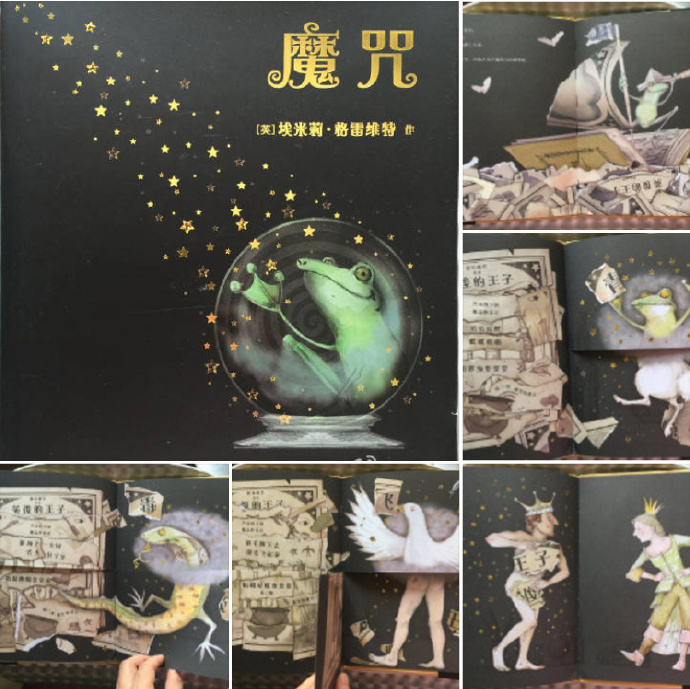
Readers who enjoyed books like “Big Bad Wolf,” “Little Mouse’s Big Book of Fears,” “Mongoose’s Letter,” and “Rabbit’s 12 Big Troublesome Things” will definitely be interested in this book. Who knows what other tricks Emily can pull off? While this book isn’t exactly mind-blowing, it certainly challenges the reader. At first, I thought it might be a printing mistake! It wasn’t until I flipped through it for the third time that I finally understood that the spells the frog had been practicing were actually two-part, meaning there are actually 36 possible combinations for the six spell pairs! — If you only practiced six spells after reading this book, you’d be missing out.
The story is simple: a frog painstakingly studies a magic spell and finally transforms himself into a prince, earning the princess’s longed-for kiss. And then… I won’t spoil the story. Such a simple idea can lead to such a delightful picture book, primarily because it adheres to the principles of play in a good children’s book. “Games + humor” is the magic formula for a good children’s book.
The book’s creativity lies in the fact that it can’t be told using PowerPoint or any other electronic gadgets; it must be told through a tactile book with pages that can be flipped back and forth. It proves that paper picture books should last forever.
Recommended reading age: 4 years old and above, suitable for shared reading
May 20
# Argentine Primera División Recommended Books #The Boy and the Cherry Tree, Mark Somerset (New Zealand)
Text and illustrations by Ron Somerset, translated by Ajia, Xinlei Publishing House, 2016
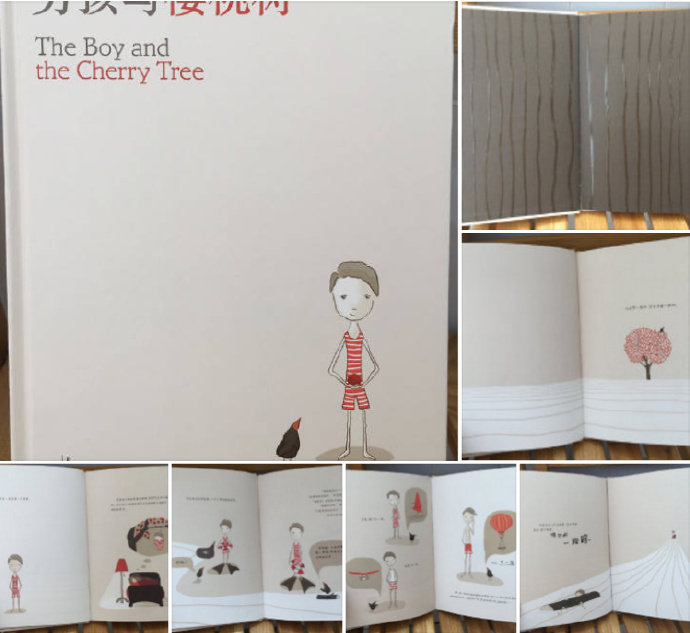
This is a parable about dreams and perseverance. If you have a dream (no matter how big or small), what would you do? A rational plan usually goes something like this: To achieve Dream A, you need to first fulfill Condition B; to achieve B, you need to first satisfy Condition C; to achieve C, you need D; to achieve D, you need E… And so we set out on our journey. The more fortunate will begin at the closer points E, F, and G, while the less fortunate will start further away. As we walk, we gradually become accustomed to it, and perhaps even achieve something fortunately on Path X or Y. Dream A becomes increasingly distant… And so we gradually learn to laugh at ourselves: ideals are full of promises, reality is very skinny…
“The Boy and the Cherry Tree” tells a rather unusual story. While this seemingly minimalist picture book is clearly intended to delight children, upon repeated reflection, it unexpectedly reveals a resounding declaration of dreams. The beautiful cherry tree is the boy’s dream, but between him and the tree lies a fast-flowing river, strewn with countless twigs and rocks that could cause bumps and bruises… The boy encounters numerous obstacles, including the bird that always offers guidance at crucial moments. Of course, the greatest obstacle is himself, but he finally plunges into the river…
This little book is actually a true story, the author and the painter (the artist couple) their own story. (Video:LThe family of the creators of “The Boy and the Cherry Tree” )
Suitable for ages 3 and up; suitable for reading aloud to children
May 20
# Argentine Primera División Recommended Books # The Cat That Went to Heaven (USA)
By Elizabeth Coatesworth, illustrated by Sun Xiaohang, translated by Sun Qi; Genglin Contemporary European and American Classics Library; Hebei Juvenile & Children’s Publishing House, 2015
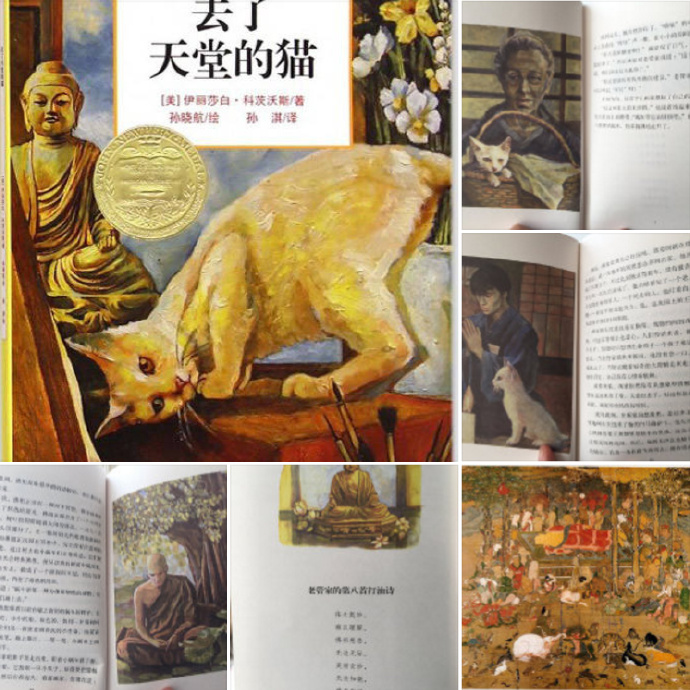
This short book, winner of the 1931 Newbery Medal, still feels very familiar today. The award was given because the American Library Association judges recognized its “great contribution to American children’s literature.” It’s essentially a slim children’s novel, set in distant Japan. A young painter, commissioned by a temple to depict the Buddha’s ascension, struggles with whether to include his beloved kitten in this crucial painting. Why is it considered such a “great contribution”? Read it carefully and ponder it, and you’ll likely understand. This lively and engaging story is rich in information, encompassing a fascinating folk tale from a foreign land, an artistic experience, a profound ethical test, a glimpse into the life of Gautama Buddha, and some of the Buddha’s previous life stories. Reading it will unknowingly transport you to an extraordinary journey.
The story concludes, of course, with a celebration of Buddha’s immense compassion, but attentive readers can’t help but wonder: Isn’t this also a reflection of Christ’s universal love and tolerance? It’s said that this female author, born into an American merchant family, began traveling the world with her family at the age of five, climbing the Alps and viewing the pyramids of Egypt. In her youth, she journeyed through the East, visiting the Philippines, China, and Indonesia, staying in temples during her travels. These experiences clearly informed her writing. Coincidentally, she also had a close friend named Louise Bechtel, the founding editor of Macmillan Children’s Books, the world’s first children’s book division. Naturally, she became a pioneer of contemporary American children’s fiction. Perhaps it was fate.
I was a little puzzled reading this book: why would the characters in the novel assume there’s a grudge between cats and Buddha? Why would the monks be reluctant to include a cat in the Buddha’s ascension? As far as I know, Buddhists are quite fond of cats. I wonder what inspired the author to write this way?
It is particularly worth mentioning that the illustrations and translation of this Chinese version are excellent! This is a version worth collecting.
Recommended reading age: 8 years old and above; suitable for adults to read aloud to children
(The last picture is not from the book, it is for reference when reading this book)
May 21
# Argentine Primera División Recommended Books # Meng Jiangnu Weeping at the Great Wall, Tang Yaming
Text, illustrations by Cai Gao, Twenty-First Century Publishing House, 2015
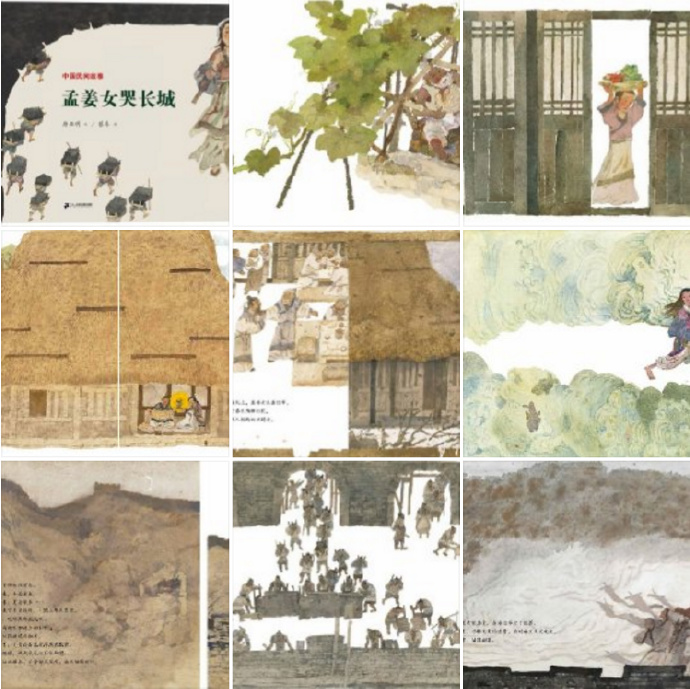
This is a very substantial picture book of Chinese folk tales, possibly the first to feature the Great Wall of China! It’s said that the original idea for this book was to create a picture book about the Great Wall—and putting aside the merits and demerits of this awe-inspiring human construction, it’s a shame that it hasn’t been properly told and depicted in a picture book! Almost ten years ago, Mr. Nao Matsui came up with the idea, and Teacher Cai Gao began a lengthy process of research and creation. Mr. Tang Yaming eventually took on the text, and the Japanese edition was published in 2012, followed by a Chinese edition in 2015. Nao Matsui said, “This book surpasses The Story of Peach Blossom Spring.”
On the surface, this is the familiar folk tale of Meng Jiangnu, searching for her husband to bring her winter clothes, and her tears collapsing the 800-li Great Wall. The first half also bears echoes of Peach Blossom Spring and Hua Mulan. But gradually, another thread emerges: the Great Wall, majestic and immensity. Closer inspection reveals the details of the construction site and the lives of the toiling ants. Finally, when the Great Wall collapses, it has become a boundless expanse of spirits…
This isn’t the kind of picture book designed to make children laugh, but perhaps it’s the kind of story we have to tell our children. We’ve come a long way from history, carrying a heavy burden, and we should at least let our children know what that burden is. Picture books may be the easiest and most engaging way to tell this story.
Suitable for ages 5 and up; suitable for reading aloud to children
Further reading:Listen to Teacher Cai Gao talk about “Meng Jiangnu Weeping at the Great Wall”
# Argentine Primera División Recommended Book #20160513–20160521
